
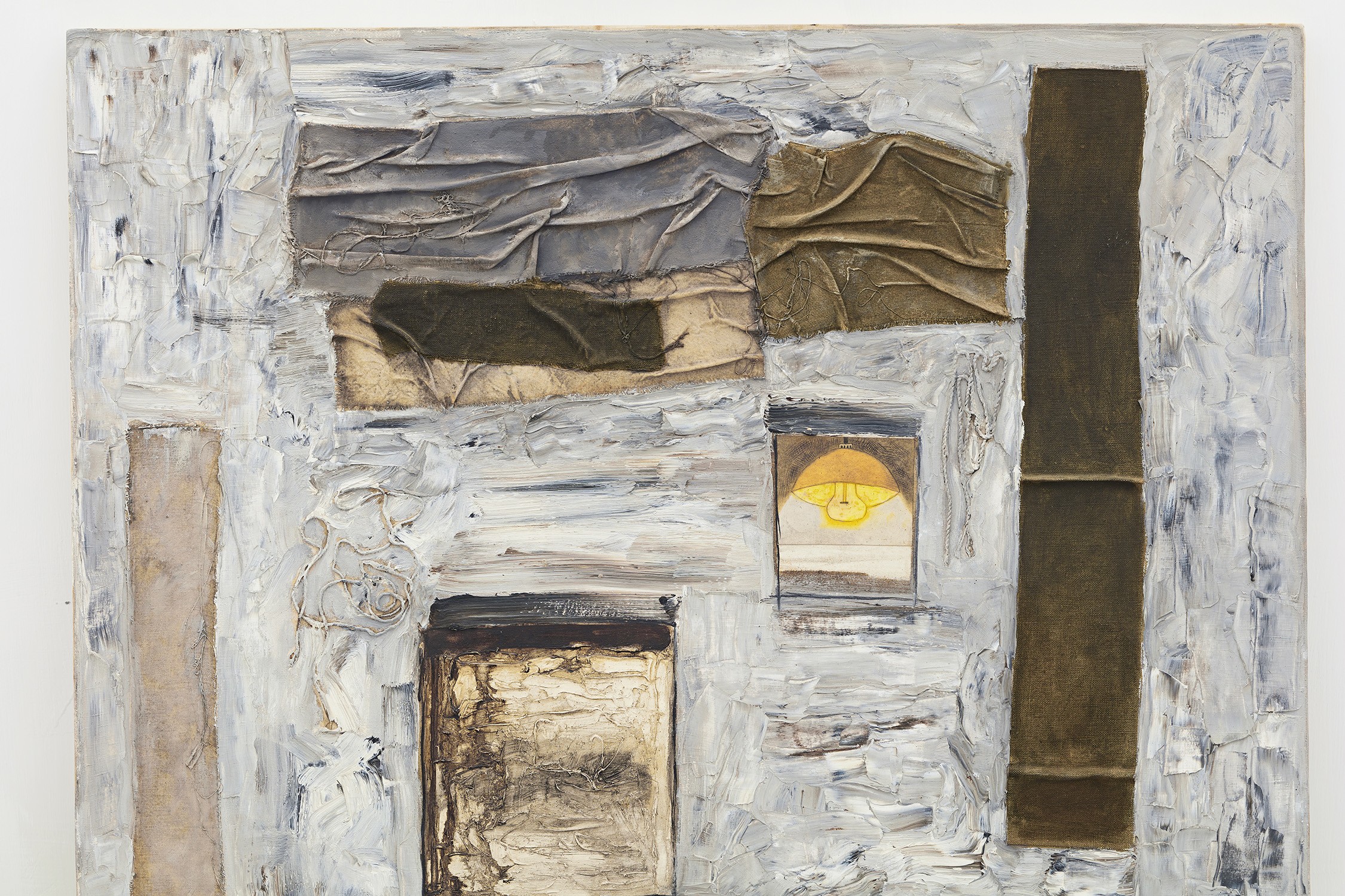
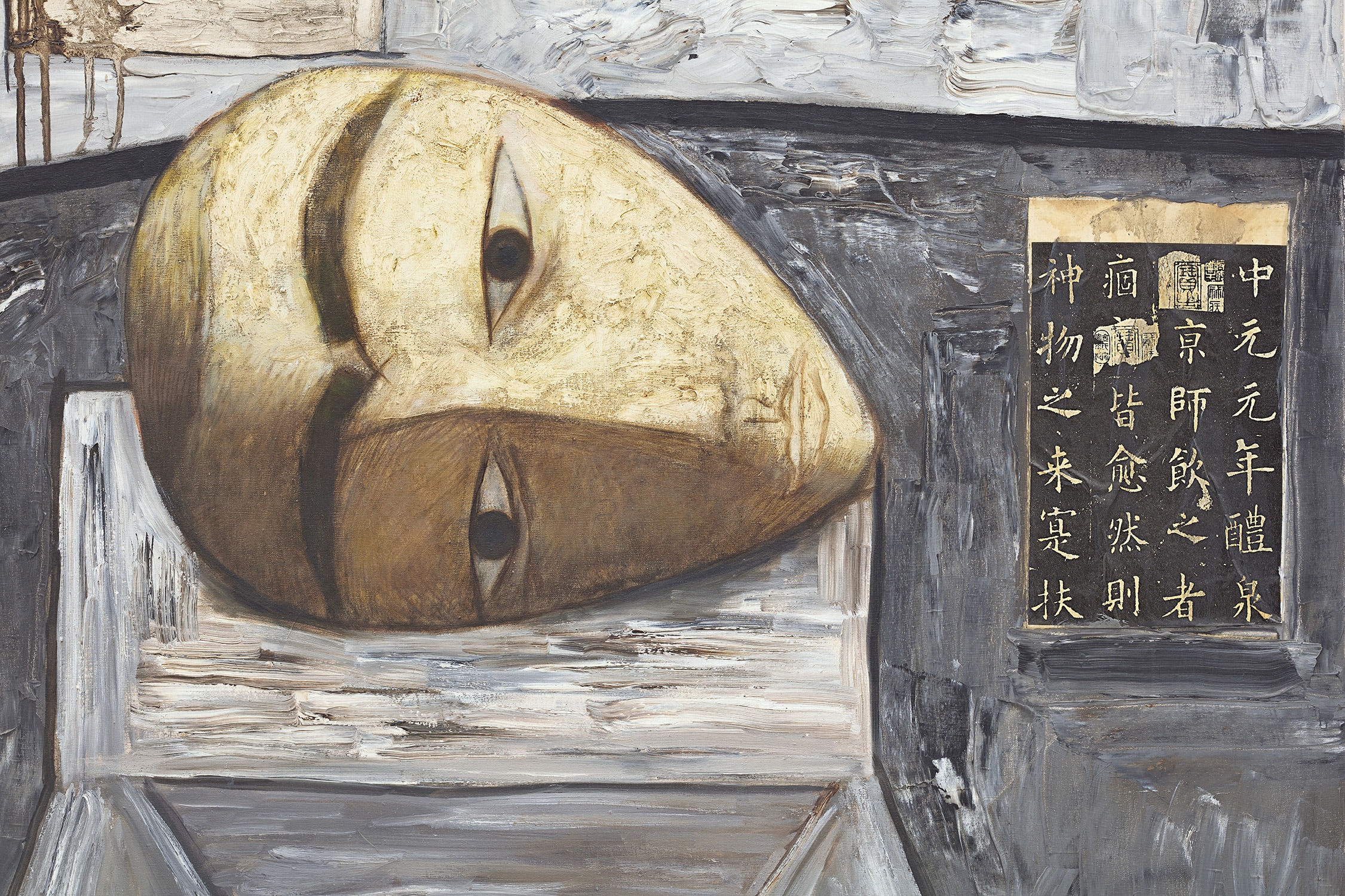
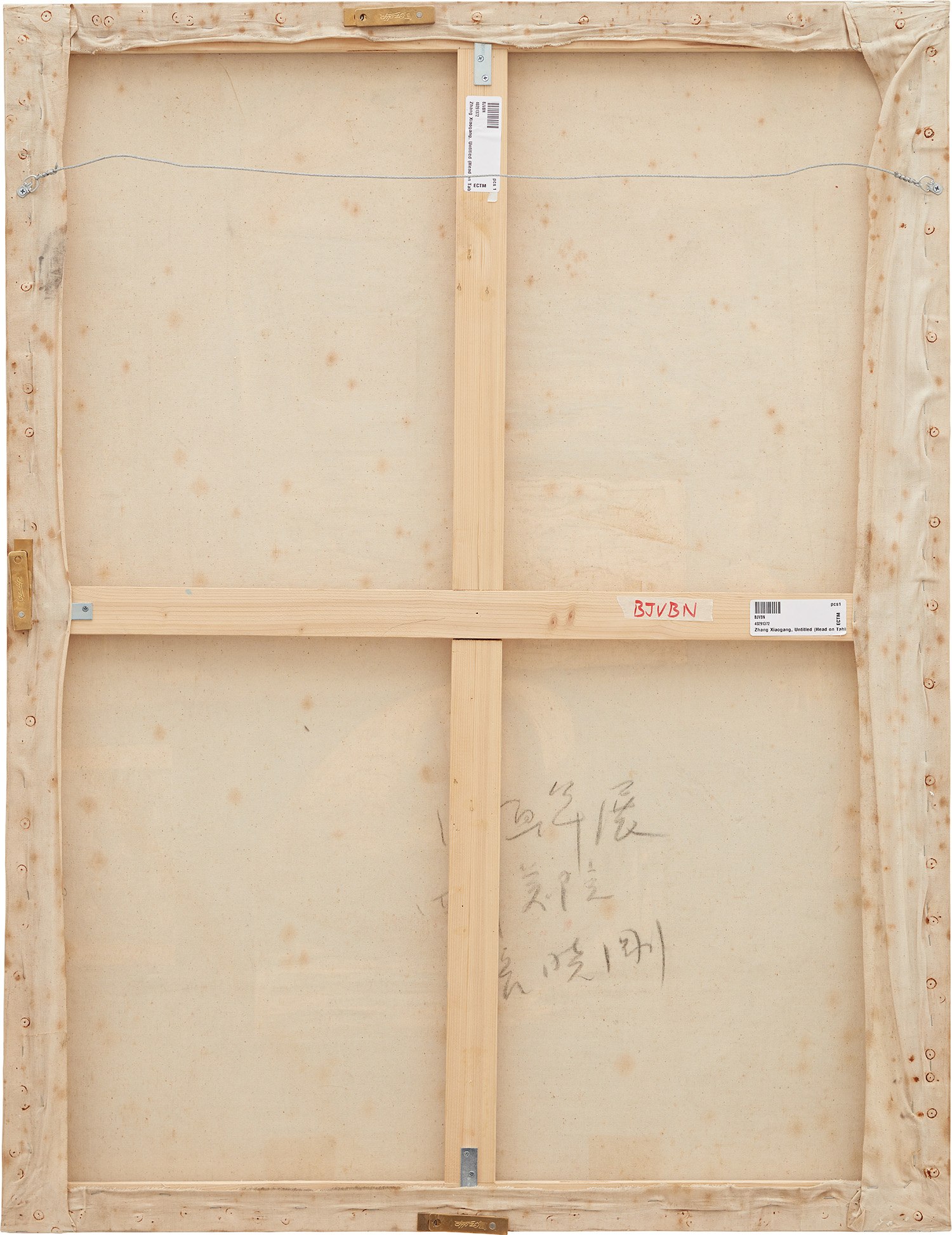




12Ж
Zhang Xiaogang
Duplicated Space No. 14 (Divided Dream)
Full-Cataloguing
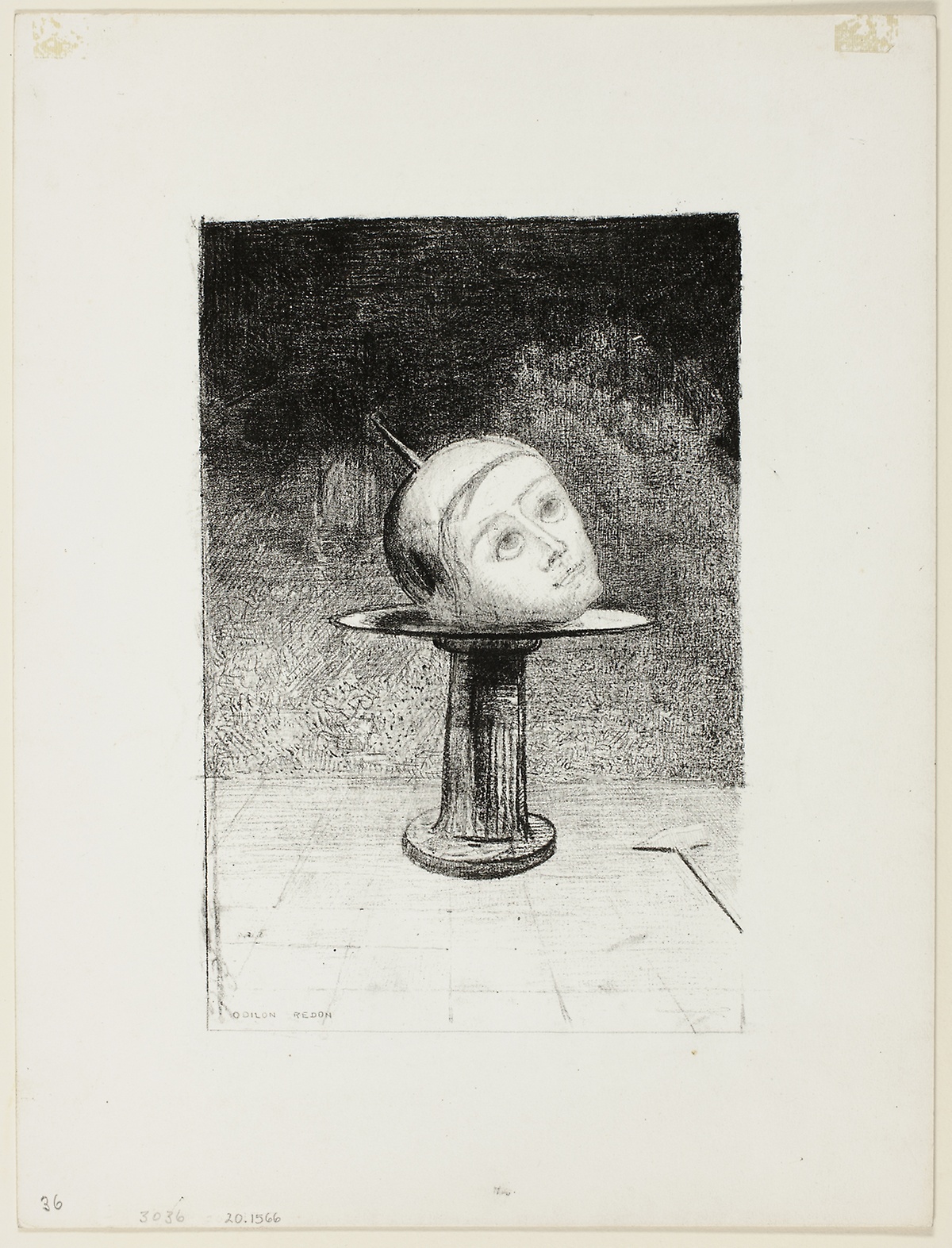
Odilon Redon
On the Dish, plate ten from
In Dreams, 1879
The Stickney Collection,
Art Institute Chicago,
United States
The political events that concluded the 1980s shook Zhang Xiaogang out of the hermetic introspection of the preceding years. As a response, he created a series of works to reference the psychological impacts of such tumultuous times, ones which left him with much emotion void. The artist describes the years between the end of the 1980s and early ‘90s as a ‘return to the human world’, during which life and sacrifice became his sole focus, employing a more expressionistic style and frequently using symbolic motifs of decapitated heads, broken limbs or inscriptions to express the complex personal thoughts that had emerged from grief and traumatic memory.
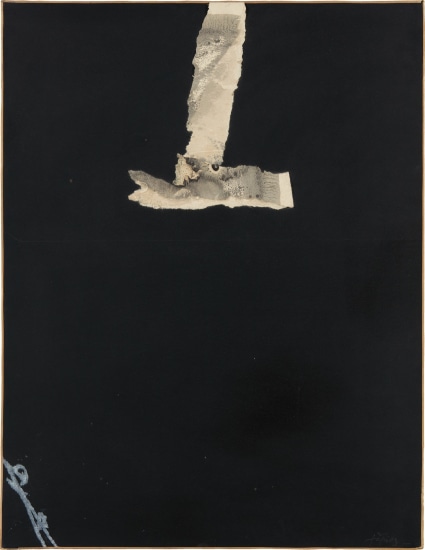
Antoni Tapies
Collage Noir (Black Collage), 1966
Phillips, New York, 25 October 2019,
lot 19In Duplicated Space No. 14: Divided Dream, the artist has constructed an airless interior that is detached from reality. In the centre atop the table, he places a truncated head with a pair of unusually large eyes, looking inexplicably empty and lost. The arrangement appears similar to ritualistic offerings at an altar, imbuing this sombre scene with an unmistakable sense of mourning. Reminiscent of the French Symbolist painter Odilon Redon’s fantastical and haunted prints, the many fractured elements found in the present composition: a rusty window, a lamp, a stele with inscriptions are all indecipherable visual cues weaved together to insinuate the artist’s broken narrative. The wrinkled fabric laid on the top enhances the layers and tactility within the scene, so filled with intense dark colours and strong use of pigmentation. The collage technique draws clear inspiration from the Spanish contemporary artist Antoni Tàpies’ practice of pasting different materials to build a richly textured surface base (see for example Collage Noir, 1966), through the integration of weighted materials on canvas, both artist sought to inspire a contemplative reaction to a heavy reality burdened with tragic memory. The uneven collage and roughly textured surface echo the sense of turbulence of the era, and the expressionless face mimics the artist’s inner monologue as he contemplates a future filled with uncertainty. This enigmatic space also brings to mind Giorgio de Chirico’s surreal and mysterious ensemble in The Song of Love of various dissimilar objects consisting of a classical head, a rubber glove and a ball: the resulting composition is rife with emotional undertones that focuses on the metaphorical reconstruction of the artist’s psychological narrative.
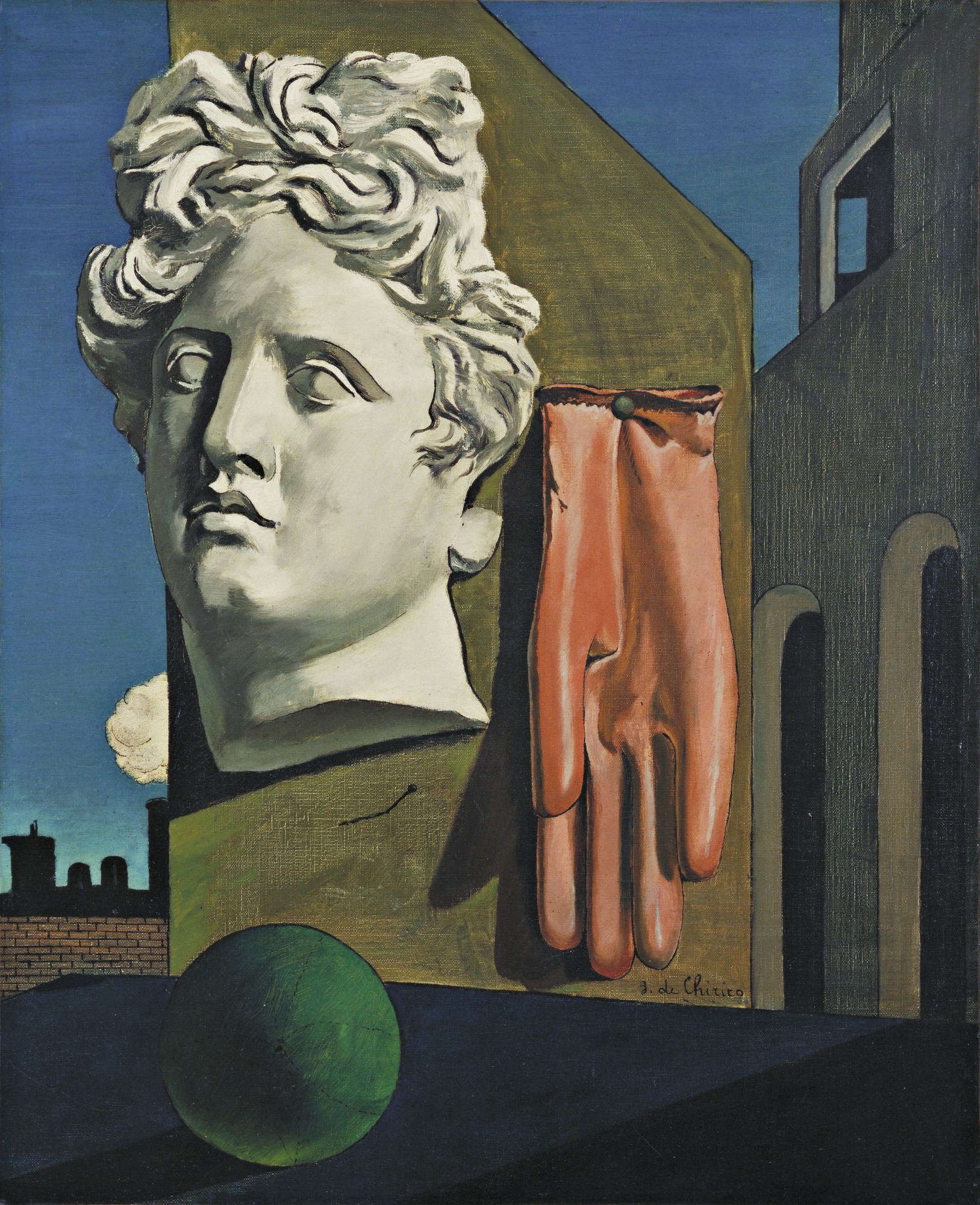
Giorgio de Chirico
The Song of Love, 1914
Collection of The Museum of Modern Art,
United States
© 2020 Artists Rights Society (ARS),
New York / SIAE, Rome
The drastic change in socio-political environment has propelled Zhang to shift from his more romantic and fantastical themes in the early years, this profound emotional impact is first captured in the Black Trilogy: Terror, Mediation and Melancholy (1989), by incorporating daily objects such as newspapers, playing cards and envelopes, the artist re-situates himself to directly confront reality. The use of collage and heavily pigmented dark shade runs through his works during the period between 1989 and 1992 that concerns reality with a sense of cold and calm detachment. Capturing a compelling feeling of spiritual confusion, the present work belongs to a body of 13 works from the Duplicated Space series that serves as a continuation to Black Trilogy as the artist searched for the strength to overcome his own demons. The Abyss series that immediately follows demonstrated a more poetic and peaceful temperament signifying the artist’s gradual shift away from scenes of grief and pain. In his writings from this period, Zhang has expressed a burning passion for art that embodies ‘a psychological quality’ that ‘fully reflects the concept of life’. As ideals and openness that characterised the art scene in the 1980s were shattered, these esoteric works contemplate the vulnerable destiny of a solitary individual confronted by the unassailable forces of the collective society.
The present work therefore represents a pivotal moment of evolution for Zhang as he roams mindfully across the ruins of the past and stands witness to the shifting historical circumstances. Some of the visual sensibilities solidified in his later Bloodline series were already evident in the present composition, such as the emphasised spots of light shining on his subject, the silent stillness of the imagery and more refined symbolic references. Searching for the emotional link between collective and individual experience, Zhang’s unique standpoint allows him to be recognised as one of the most notable artist of his generation to introduce to the world the development of Chinese contemporary art.
Zhang Xiaogang
Chinese | 1958Relying on memory and inspired by family portraits from the Chinese Cultural Revolution, Zhang Xiaogang creates surreal, subtle artworks that explore the notion of identity in relation to the Chinese culture of collectivism. Using a muted, greyscale palette, Xiaogang repeatedly depicts a series of unnervingly similar figures, often dressed in identical Mao suits, to create an endless genealogy of imagined forebears and progenitors. Their somber, melancholy gazes are interrupted only by thin red bloodlines intimating familial links as well as occasional pale splotches of color resembling birthmarks.
Xiaogang investigates how to express individual histories within the strict confines of a formula. His sitters, while appearing muted and compliant, are given physical exaggerations: oversized heads, tiny hands and long noses. These distortions imply stifled emotions and give a complex psychological dimension to the artist's work.